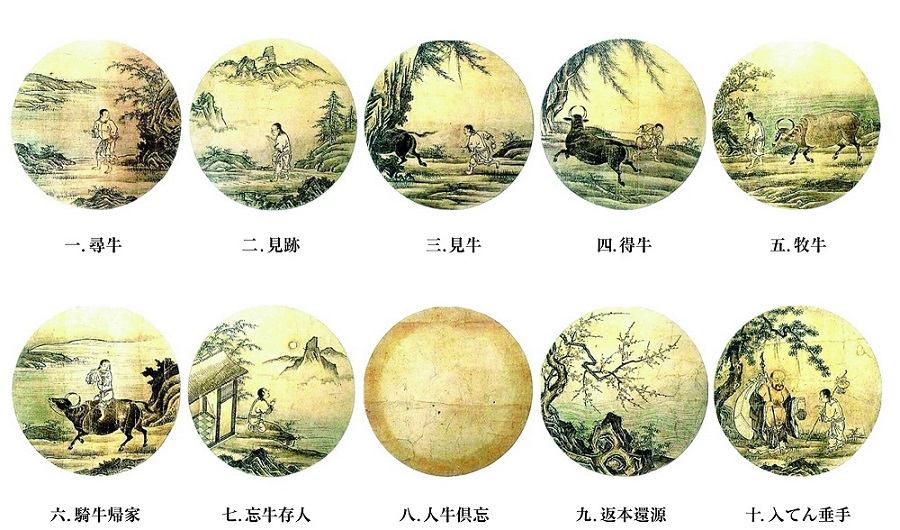[two_third]
“Science is the Yoga of the West.
“Yoga is the Science of the East”
John Lilly
What is Science?
“To me, science is a quest for the most intimate understanding of nature. It is not an industry set up for the purpose of validating existing theories and indoctrinating students in the correct ideologies. It is an adventure of the free enquiring spirit that thrives not so much on answers as unanswered questions. It is the enigmas, the mysteries and paradoxes that take hold of the imagination, leading it on the most exquisite dance.” Mae-Won Ho
Mission Statement from Mae-Won Ho’s Institute for Science in Society
What is Creation? What is creativity? How did the universe come into being? What sustains the universe? What leads to the multiplicity of forms, seen and unseen, extinct, manifest and yet to be? What is life? All cultures have attempted to answer these fundamental questions of existence. Mythology, story telling and religion served this purpose well throughout most of history, but over the last few centuries a new way of understanding and explaining the world has begun to flourish. We call this science, from the Latin ‘scientia’ , meaning knowledge. In modern times, the word science signifies two very general and related meanings.
First of all science refers to the way of discovering knowlege about the world using observation, speculation, repeated experimentation and the accumulation of empirical evidence. This mode of enquiry, also known as the scientific method, is a rigorous and disciplined way to unfold understandings of how the different layers of the world function. Observations are made about the world we see; theories or hypotheses are suggested to explain the observations or to connect them to other observations; experiments are performed to provide evidence that either validates or invalidates the hypotheses; and then further experiments are attempted to replicate or further refine the conclusions.
In this way, an objective body of knowledge emerges that can be universally agreed upon. Science books, science courses and scientific journals all document the current levels of scientific understanding providing the second definition of the term science as the sum total of knowlege accumulated through such investigations.
Of course, ‘universally agreed upon‘ encompasses a very narrow segment of the scientific world and is not necessarily the current state in many of the diverse fields of scientific enquiry. The scientific community spends a large amount of its time in interpretation, speculation and hypothesis as uncertainty is one of the fundamental features of the relative world. Also, because of extreme specialization, the incredible diversity of fields of enquiry and the explosion of information that has emerged in the last fifty years, it has become very difficult in science to step back and see the big picture, to locate the large scale themes integrating the diversity. Fortunately, interdisciplinary studies are emerging and scientists are communicating with others in related fields and beginning to develop more powerful integrative themes. Our approach will be an integrative exploration of physics, biology and neuroscience and how these disciplines help deepen our understanding of the spiritual expression of hatha yoga practice.
The traditional or dualistic scientific perspective is fundamentally objective. That is, it is interested in the study of objects that can be detected, from large scale structures like stars and galaxies, to microcosmic possibilities such sub-atomic particles, to patterns of thought. It is not concerned with the study of the subject, the nature of the self who makes these observations, which is the major interest in the spiritual or yogic enquiry into the nature of reality.
The non-dual yogic enquiry into the nature of reality with its own language, metaphors, imagery and stories, includes enquiries into the objective realities as does modern science, but also enquires as to the nature of the self, the subjective “I”. It describes the objective creation and also the subjective observer, confidently venturing into the subjective territory that science fears to tread with a penetrating objectivity worthy of the finest scientist and this is the approach we will be taking here.
In our studies, we will integrate yogic terminology on the nature of forms with that of modern science to create an embodied integral languaging relevant to both. In our general science section, we will focus on the work of three contemporary scientists who embrace an integral understanding of science, demonstrate a capacity to teach that is inspiring and transformative, and whose work is directly related to our meditation/yoga practice. Mathematical cosmologist Brian Swimme will introduce the emergence of the universe, biologist Mae-Won Ho will guide us through the emergence of life and pediatric psychiatrist Dan Siegel will help unfold the emergence and development of self reflexive awareness in the human mind. We will see that these three stages of evolution are aligned on a continuum of creativity and increasing complexity and all three are present today, in us, as we awaken to the depths of the emerging present moment.
We will then delve deeply into the science of hatha yoga including: how the tensegrity model, tonic function and the concept of the living matrix awaken new insights into the relationship of gravity, posture, movement and ultimately intelligence; the nature of tissue, from cell wall to skin, bone and muscle; and a detailed look at anatomy, physiology and kinesiology as they relate to the study and teaching of hatha yoga. We will also unfold the yogic science of the 3 bodies and 5 sheaths as well as prana, nadis and chakras and relate these to the emergent revelations of contemporary neurobiology.
Finally we will look at some contempory scientific models of evolution and examine how, through creating and sustaining sympathetic resononant network of tuned living matrices, we can more consciously and compassionately participate in the evolutionary journey of our home planet, mother earth, and give birth to a new way of being for the human species that honors and nurtures creation and the creative processes.
[/two_third]
[one_third_last]
Related Links
Link 01
Link 02
Link 03
[/one_third_last]


